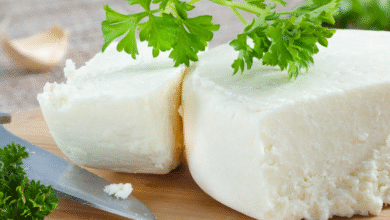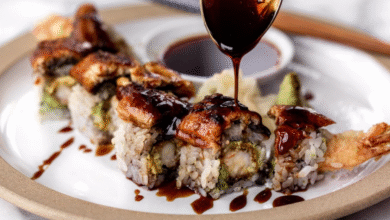Sweet Rose Wine: A Complete Guide for Every Wine Lover

Discover everything about sweet rose wine—its flavors, history, food pairings, serving tips, and more. A complete guide for wine lovers who enjoy sweet, refreshing rosé.
Introduction to Sweet Rose Wine
Sweet rose wine is one of those delightful drinks that instantly brings joy to the table. With its light pink hues, fruity notes, and refreshing sweetness, it’s often the go-to choice for gatherings, summer evenings, or simply unwinding after a long day. Unlike heavy reds or sharp whites, sweet rose wine strikes a balance that feels approachable, playful, and versatile.
What makes sweet rose wine particularly appealing is its ability to please both wine experts and casual drinkers. It’s less intimidating than a complex Bordeaux and far more festive than a typical Chardonnay. That balance makes it an accessible entry point for those new to wine while still offering depth for those who’ve spent years exploring vineyards and cellars.
The Origins and History of Sweet Rose Wine
Wine historians trace the origins of rose wine back thousands of years. Early civilizations like the Greeks and Romans often made wines that were pale in color and naturally sweet due to limited winemaking techniques. These early versions, while different from today’s refined bottles, set the stage for what would become a globally celebrated style.
As viticulture developed across Europe, especially in France, rosé wine gained prominence. Sweet rose wine in particular began to shine in regions that emphasized approachable, fruit-forward wines. Over time, winemakers across Spain, Italy, and eventually the New World adapted these traditions, giving us the diverse range of sweet rose wines we enjoy today.
What Makes Sweet Rose Wine Unique?
Sweet rose wine stands out because of its distinct flavor profile. Typically, it carries notes of strawberries, cherries, raspberries, and sometimes tropical fruits, all balanced by a touch of floral undertone. The sweetness makes it less tart than dry rosé and more refreshing compared to heavier wines.
The uniqueness also lies in its versatility. Sweet rose wine can be enjoyed chilled on its own, paired with a variety of dishes, or even used as a base for cocktails. This adaptability makes it perfect for both casual sipping and sophisticated dining experiences.
How Sweet Rose Wine is Made
To understand sweet rose wine, it’s important to know the winemaking process. Unlike red wines, which require extended contact between grape juice and skins, rose wines spend only a short time with the skins. This limited contact is what gives rose its signature pink color.
The sweetness comes from either stopping fermentation early to retain natural sugars or blending the wine with unfermented grape juice. Some winemakers also achieve sweetness through specific grape varieties that naturally carry higher sugar content. Regardless of the method, the goal remains the same: crafting a wine that’s flavorful, aromatic, and delightfully sweet.
The Flavor Profile of Sweet Rose Wine
When you sip sweet rose wine, the first thing you’ll notice is its fruity bouquet. Imagine a medley of ripe strawberries, watermelon, and peaches. On the palate, it’s smooth, often with a hint of honey or vanilla, depending on the grape variety and production method.
This flavor profile makes sweet rose wine incredibly easy to drink. It’s not overly acidic or bitter, so even those who usually avoid wine find themselves pleasantly surprised. The natural sweetness paired with crispness creates a refreshing experience that feels indulgent yet light.
Popular Varieties of Sweet Rose Wine
Sweet rose wine isn’t just one style—it comes in various forms depending on the grapes used and the region it’s produced in. Some popular varieties include:
| Variety | Origin | Flavor Notes |
|---|---|---|
| White Zinfandel | California | Strawberry, melon, citrus |
| Pink Moscato | Italy | Peach, apricot, floral hints |
| Grenache Rosé | France/Spain | Cherry, raspberry, spice |
| Lambrusco Rosato | Italy | Bubbly, berry-rich, lightly sweet |
| Rosé d’Anjou | Loire Valley | Redcurrant, soft floral notes |
Each of these varieties brings something different to the table, but they all share the core characteristic that makes sweet rose wine so beloved: a delightful sweetness balanced with refreshing acidity.
Food Pairings with Sweet Rose Wine
One of the joys of sweet rose wine is its ability to complement a wide range of dishes. The sweetness cuts through spicy foods, balances salty flavors, and pairs beautifully with creamy textures.
For light meals, think salads with fresh fruits, soft cheeses, or grilled chicken. For heartier options, sweet rose wine works wonders with spicy Asian cuisine, barbecue, and even pizza. Desserts like strawberry shortcake or peach cobbler also find a perfect partner in a glass of sweet rose wine.
Expert Tip: When in doubt, pair sweet rose wine with dishes that mirror its fruit-forward profile. Fresh, vibrant foods often make the pairing seamless.
Serving and Storing Sweet Rose Wine
Sweet rose wine shines when served at the right temperature. Too warm, and it feels heavy; too cold, and the flavors become muted. Ideally, it should be served chilled, around 45–55°F. A simple rule: pop it in the fridge for a couple of hours before serving.
For storage, keep bottles in a cool, dark place. Unlike some red wines, most sweet rose wines are meant to be enjoyed young, typically within a year or two of bottling. That freshness is part of what makes them so enjoyable.
Sweet Rose Wine in Celebrations
Sweet rose wine has become a staple at celebrations worldwide. Its pink hue instantly adds a festive touch, whether it’s a wedding, birthday, or holiday gathering. The sweetness also ensures it appeals to a wide range of guests, making it a safe and crowd-pleasing choice.
From romantic dinners to summer picnics, sweet rose wine has a way of elevating the moment. It’s not just about drinking wine—it’s about creating memories, and the cheerful character of sweet rose wine perfectly complements life’s happiest occasions.
Common Misconceptions About Sweet Rose Wine
Many people assume sweet rose wine is overly sugary or lacks sophistication. In reality, high-quality sweet rose wines offer layered complexity, balance, and elegance. The sweetness enhances rather than overshadows the flavor profile.
Another misconception is that all rose wines are sweet. While sweet rose wine is one category, many rosés are dry or semi-sweet. Knowing this distinction helps drinkers explore the style that best suits their palate.
Health Aspects of Sweet Rose Wine

Like all wines, sweet rose wine should be enjoyed in moderation. In small amounts, it can be part of a balanced lifestyle, offering antioxidants such as resveratrol. Its lighter alcohol content compared to many reds makes it a gentler option for those who want to sip responsibly.
However, the sweetness does mean slightly higher sugar content, so those watching sugar intake should be mindful. Still, for most people, enjoying a glass of sweet rose wine is a pleasant way to unwind and savor life’s small luxuries.
Sweet Rose Wine Cocktails
Sweet rose wine is not limited to being served solo—it also makes a fabulous base for cocktails. Its fruity sweetness pairs wonderfully with spirits, mixers, and fresh fruits.
Popular combinations include rose sangria with fresh berries, rose spritzers with soda water, or even a sparkling rose mimosa for brunch. These creative twists highlight the wine’s versatility and make it a fun addition to cocktail culture.
FAQs About Sweet Rose Wine
What is sweet rose wine best paired with?
Sweet rose wine pairs beautifully with light meals, spicy dishes, and fruity desserts. It complements everything from grilled chicken to strawberry cheesecake.
Is sweet rose wine the same as white zinfandel?
White Zinfandel is one type of sweet rose wine, but not all sweet rosés are White Zinfandel. Many other grape varieties and styles fall under this category.
Can sweet rose wine be aged?
Most sweet rose wines are designed to be enjoyed young. While some high-quality versions may last a few years, they generally don’t improve with long-term aging.
Does sweet rose wine contain a lot of sugar?
Sweet rose wine does contain more sugar than dry wines, but the exact amount varies depending on the producer. It’s sweet, but usually not cloying.
Is sweet rose wine good for beginners?
Absolutely! Its approachable flavor, lower acidity, and fruit-forward notes make it an excellent starting point for those new to wine.
Conclusion
Sweet rose wine is more than just a pretty pink drink—it’s a versatile, flavorful, and joyous expression of winemaking. From casual sipping to fine dining, from sunny picnics to elegant celebrations, it fits seamlessly into countless occasions.
Whether you’re a wine novice or a seasoned enthusiast, sweet rose wine invites you to slow down, savor, and enjoy the simple pleasures in life.





